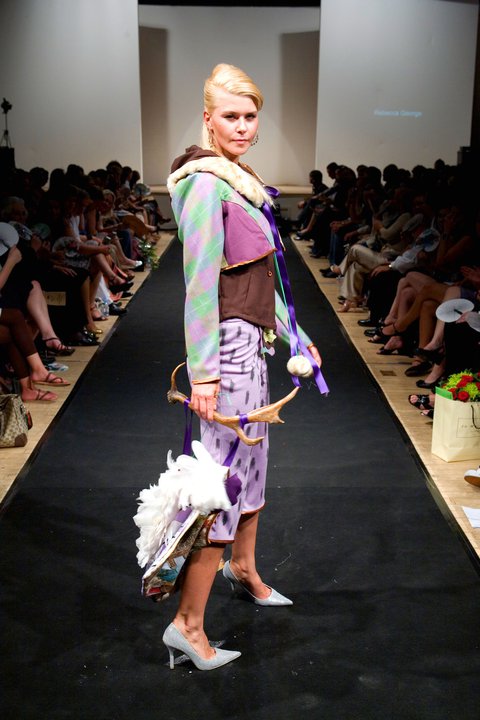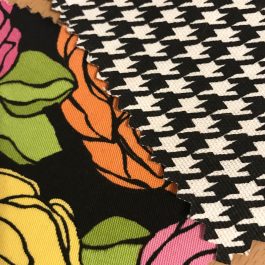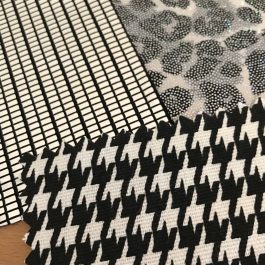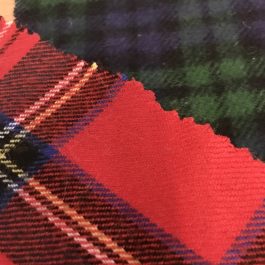
Mixing prints is a fun way to utilize extra fabrics while adding a pop of color to all kinds of sewing projects! Placing patterned materials in unexpected combinations will give any sewn garment or home furnishing a high-fashion look. Sorting through your fabric stash and attempting to use various prints together can seem a little overwhelming at first. These easy tips will answer any questions about mixing patterns, as well as inspire new ways of thinking about combining prints! Let’s talk about some of the factors that go into successfully mixing prints.
Consider the Patterns
The size of the patterns and prints being used can make or break the success of mixing printed fabrics. Known as a “repeat,” the reoccurring elements of the print determine how “large” or “small” the pattern looks to the eye. Generally, colors and shapes on larger prints (like a wide tartan plaid) will repeat less but be very obvious at first glance. The designs on smaller prints (like tiny, intricate florals) will repeat much more often and have a smaller size. When mixing prints, it adds more interest to combine small, medium, and large patterns. This way, they won’t compete with each other like they might if the patterns are the exact same size.

Mixed prints also should not clash in their overall theme(s). For example, a fabric covered with a pattern of roses shouldn’t be paired with a tropical leaf print. Instead, the rose print would be better combined with a checkered cloth in similar colors. A leafy tropical-themed fabric would match better with a parrot print than another floral motif that isn’t tropical.
Create a Color Palette
Even when mixing various prints, the colors should still work together in harmony. A color palette (sometimes called a “color story”) consists of a group of colors that fit together for a project or collection. Typically, there are two or three main colors, and then a few accent colors added that are used in smaller amounts. The fabrics that are being mixed should include some of the same colors, even if they are in totally dissimilar kinds of prints.

Darker or lighter versions of the colors will also work as long as they don’t clash with the main look and mood of the sewing project. Keep in mind that just because two patterns incorporate the same colors, they might not always look good together. Exceptions to the color palette rule are sometimes still workable though, particularly with certain styles and decades. The end result of mixing prints should be fun but still look really put together!
Think About Fabric Textures
Fiber content and the texture of the fabrics are also important when mixing prints. When they are being joined, fabrics generally tend to respond better to being attached to similar fabrics. Like many aspects of sewing and fashion, sometimes there are exceptions. Making sample swatches of your printed fabrics is an easy way to test out the compatibility of various materials when sewn together, saving you time and fabric in the end.
Carefully Join Patterns
If you plan to create mixed print garments or home furnishings, be sure to plan out how the repeats will appear on the finished project. This will ensure the sections of the print you prefer are included, optimizing your color palette and the overall effect. The pattern pieces may have to be placed and cut out in a particular section of the material in order to encompass a certain part of the print. For this reason, working with printed fabrics can sometimes use up more material than regular solids. Purchasing a little extra of the printed material is recommended just in case.

Mixing printed fabrics together will definitely keep your sewing projects interesting!

yes, yes, yes. I was also taught that if you want to mix prints, as long as each print chosen has one color which appears in all of them, the choice is acceptable and IT IS FUN!!!